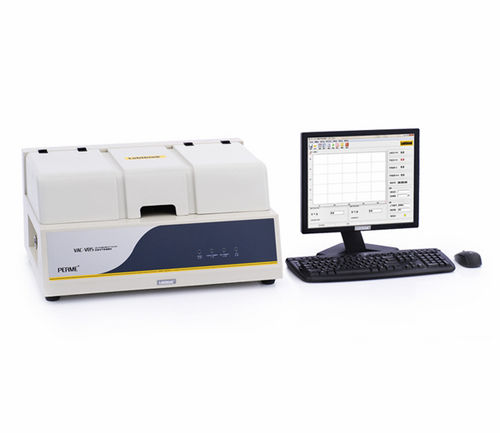
#Product Trends
Test Method for Gas Separation Effect of Separation Membrane
VAC-VBS differential pressure gas permeability tester
Separation membrane is a kind of membrane with selective permeability, in which gas separation membrane is based on the permeability of different gases in the membrane to achieve gas separation. Compared with other gas separation technologies, the advantages of gas separation membranes include operation in ambient temperature, low energy consumption, environment friendly, no phase change, simple operation and small size. Therefore, gas separation membranes are used in nitrogen preparation, oxygen enrichment, hydrogen purification and recovery, natural gas removal of acidic gases such as hydrogen sulfide, carbon dioxide and water vapor and so on, it has also been widely used in recovery of organic steam and other fields. The factors affecting the performance of gas separation membranes include its permeability and selectivity. The permeability affects the separation efficiency of gas separation membranes. The selectivity affects the separation effectiveness of gas separation membranes. Good gas separation membranes should have high permeability and selectivity. Separation coefficient is a key performance index for evaluating the selectivity of separation membranes. In this paper, the separation coefficient of a separation membrane sample was measured.
Test sample
In this experiment, a gas separation membrane was used as the test sample to test the separation effect of the sample on nitrogen (N2) and carbon dioxide (CO2).
The separation coefficient can be expressed by the ratio of permeability coefficient of separated gas. The gas permeability coefficients of N2 and CO2 can be measured by pressure difference method. The test process is based on ASTM D1434 Standard Test Method for Determining Gas Permeability Characteristics of Plastic Film and Sheeting
The sample was tested by VAC-VBS differential pressure gas permeability tester developed and manufactured by Jinan Labthink Instruments Co., Ltd.
The differential pressure method gas permeability tester is equipped with pressure sensor. Gas pressure difference enables the gas permeation through the sample. Pressure sensor can monitor the change of gas pressure. The specific test process is as follows: the clamped sample divides the test chamber of the equipment into the upper chamber and the lower chamber. The upper chamber is filled with test gas under a certain pressure, and the lower chamber is vacuum-pumped to form a low pressure environment. The test gas permeates through the upper chamber to the lower chamber. The pressure in the lower chamber varies with the increase of the amount of gas permeated. The gas permeability of the sample can be obtained by real-time monitoring the pressure change in the low-pressure chamber with a pressure sensor. The gas permeability coefficient is the product of the gas permeability and the thickness of the sample.
Test process
(1) Three specimens with a diameter of 97 mm were cut from the surface of the sample, and the thickness of the specimens was measured.
(2) Apply a thin layer of vacuum grease evenly around the test area of the three test chambers of the equipment, and place a supporting filter paper on each side. Paste the samples into the test chamber of the equipment, press the samples gently, and remove the bubbles in the contact area between the test chamber and the test chamber. Close the top cover of the test chamber.
(3) The equipment is connected with nitrogen gas source, and the parameters such as sample name, thickness, test temperature, humidity and test mode are set on the control software of the equipment. Click on the test options and the test begins. The equipment is tested according to the set parameters, and the test results are displayed after the test.
(4) After the nitrogen permeability test is completed, the equipment is reconnected to the carbon dioxide gas source to test the carbon dioxide gas permeability coefficient of the sample.
Test result
The permeability coefficient of nitrogen and carbon dioxide is 6.3289 × 10-11 cm3•cm•cm-2•s-1•cmHg-1 and 1.6455×10-9cm3•cm•cm-2•s-1•cmHg-1 respectively. The separation coefficient of CO2/N2 is 26.0.
Conclusion
Gas separation coefficient is key performance index for evaluating the separation effect of separation membrane. The permeability coefficients of nitrogen and carbon dioxide were tested respectively. The CO2/N2 separation coefficient of the tested separation membrane samples was obtained. The higher the separation coefficient, the better the separation effect of separation membrane on gas. The testing equipment is accurate, efficient and reliable, the operation is simple.





